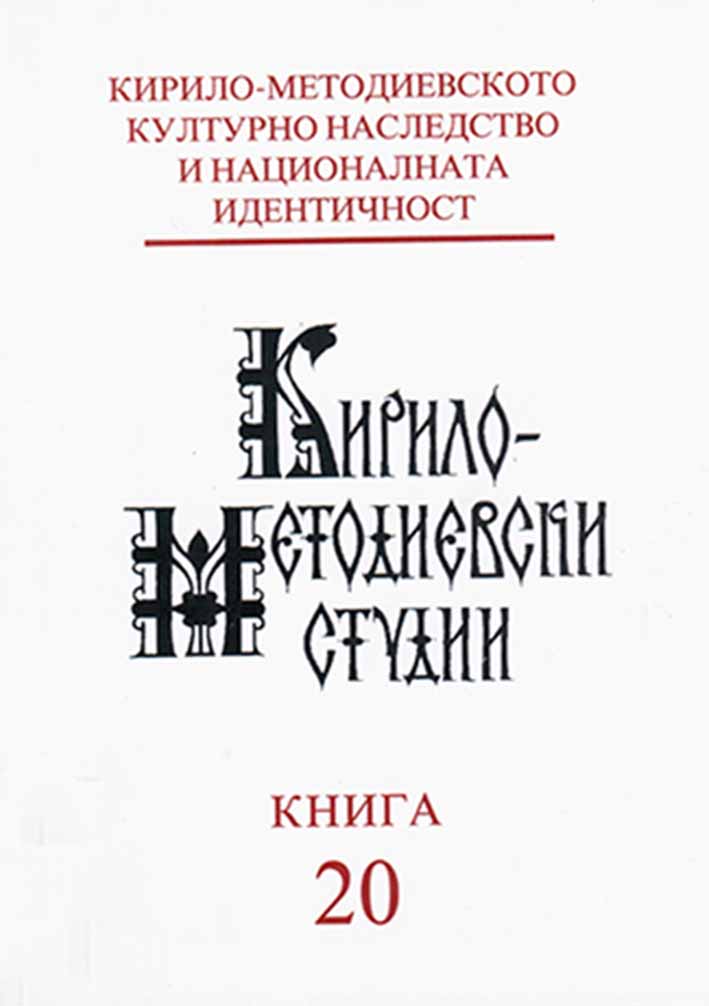Juraj Joannikij Bazilovič OSBM a jeho Mníšske pravidlá a nariadenia
George Joannikij Bazilovič OSBM and his Monastic Rules and Constitutions
Author(s): Milan LachSubject(s): Language studies, Language and Literature Studies
Published by: Кирило-Методиевски научен център при Българска академия на науките
Summary/Abstract: George Joannikij Bazilovič OSBM and his Monastic Rules and Constitutions have various specific characteristics. In Bazilovič's approach, in the drafting of his Rules, he displays a certain capacity in compiling the text and at the same time, in synthesizing the numerous works which were at his disposal. His Monastic Rules and Constitutions were primarily based on two works: the Monastic Rules of Karlovci and the Common Rules of Rutsky. We cannot evaluate his method of compilation from a modern point of view: he lived at a time in which the method such as that which he employed was standard. However, from a scientific point of view, it would be too bold to look for only positive elements in the Monastic Rules and Constitutions of Bazilovič. We must critically ascertain that he copied nearly everything from the Monastic Rules of Karlovci, as well as assuming the principal idea of his Rules of eighth from the Major Rules of St. Basil the Great. Another peculiarity which we wish to point out is the fact that on his part existed a particular openness towards the Orthodox, precisely in the moment in which they were considered to be schismatic. At that time, when the Greek Catholic Churches sought inspiration primarily from the Roman-rite Catholic Church, Bazilovič did not fear to let himself be inspired by the Orthodox, or rather, it is better to say that he did not fear to return to those origins which could more deeply penetrate the identity of the Eastern Basilian monks. As an example, he did not copy the Constitutions of the Jesuits, as one might have well expected, given that he was familiar with them since the time of his studies. Neither did Bazilovič copy the Monastic Rules of Karlovci. We can affirm however, that he borrowed its structure. As already mentioned, he did not adopt many of the Rules, but simply adopted for his Monastic Rules and Constitutions only that which he considered as appropriate for his monks. This fact, in regards to Bazilovič, is considered by us as a particularity for the local Greek Catholic Church of the Eparchy of Mukačevo. Despite the fact that ecumenical dialogue was not yet heard of at that time, we are convinced that today we can be inspired by his approach and openness, without any equivocation of negating oo ignoring our statute of the Eastern Catholic Church. Openness to theological dialogue should not be immediately understood as a loss of one's own identity as neither should the capacity to retain those elements which are found in the Orthodox Church. On the contrary, by means of confrontation with others' differences and, at the same time, numerous similarities, we can search for a path which draws us closer together. We would also like to illustrate another fact: as inspiration for the drafting of the Monastic Rules and Constitutions, neither Bazilovič nor Bishop Bačinsky resorted to the monastic rules of Russian Orthodox monks, but in to monastic rules of Serbian Orthodox monks. Here it is noted that they did not feel any historical or spiritual connection with Russia, as is instead noted today. On the contrary, in order to avoid accusations of Panslavism or Russophilism from the State, they drew inspiration from the only Orthodox Church of the Austrian Empire which already had its own structure and hierarchy, namely the Serbian Church. It is interesting to note our discovery made which led to realize that the Monastic Rules of Karlovci were inspired, in a certain sense – at least insofar as concerned the monks' study – to Jesuit rules. We also discovered that every Thursday students were not expected to study but to occupy themselves with some physical labor which allowed for a mental break while adding to physical discipline. Another particularity of these Monastic Rules and Constitutions is the fact that they were written, for the first time in the history of the Greek Catholic Church of the Eparchy of Mukačevo, for the Basilian monks. Until then, their way of life had followed the Rules of Rutsky To a certain degree, another specificity of the Rules according to Bazilovič is their precision and concision. Their outline is clear enough for all of the brothers to understand their rights and obligations. Thus, for example, also a simple brother knew what the Rules demanded of the Superior. In the Rules of Bazilovič – by means of their approval on behalf of the local bishop, with whom the relationship is expressed between him and the monks who belonged directly to his jurisdiction as well as the obligation of conscience to follow the Rules applied to the monks in his regards – is also present an aspect of canon law regarding the development of the particular law of the local Church of the Eparchy of Mukačevo. However, perhaps the most particular characteristic of these Monastic Rules and Constitutions, is the accent which Bazilovič places on the novices in the eighth of the Major Rules, with the order that the Superior must repeat it frequently, as well as the fact that it deals with abnegation and renouncement particularly of the devil, of concupiscence of the body, etc. this Rule contains all that which the monks had to c ontinuously abide by. Underlining this rule, we notice what Bazilovič considered as the most important in the formation of the novices and of the Basilian monks overall. We propose the thesis that this idea, besides being the principal idea of the eleventh chapter on the novices, is also that which underlies the entire Monastic Rules and Constitutions of Bazilovič.
Journal: Кирило-Методиевски студии
- Issue Year: 2011
- Issue No: 20
- Page Range: 219-230
- Page Count: 12
- Language: Slovak
- Content File-PDF

